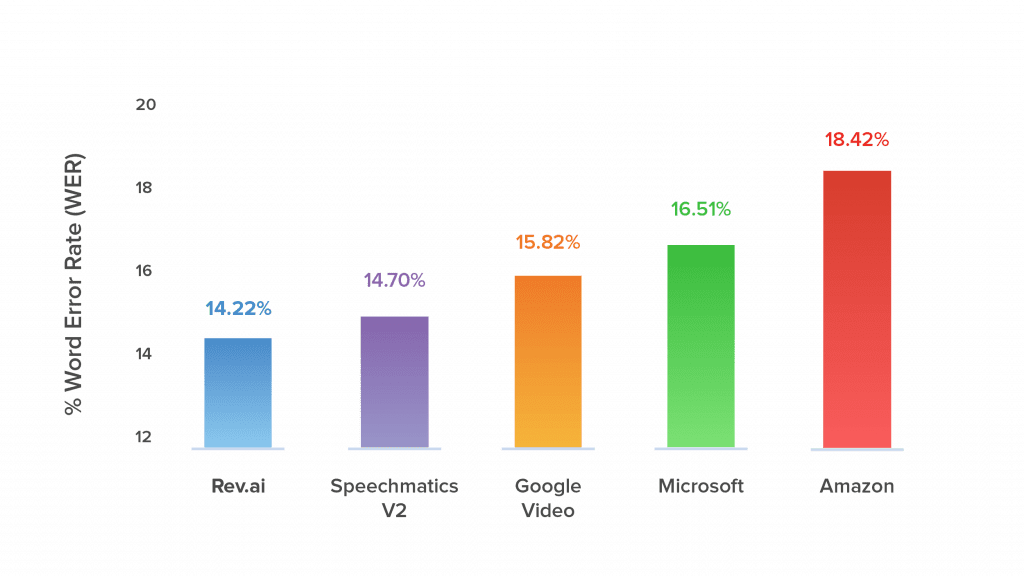What Is a Transcription Error & Who Does It Better – Humans or AI?
Learn about what transcription errors are, why they occur for both human and automatic transcription services, and how to limit errors.
Whether it’s for a business meeting or a legal interview, transcripts are invaluable for creating detailed written accounts for later reference. Without them, the rate at which people could transfer information would slow down. And with it, so would the productivity of many industries.
So, obviously you want to ensure that your transcripts are of the highest quality. However, that doesn’t always happen. For reasons ranging from misunderstandings to software limitations, sometimes transcription errors occur.
In this guide, we’ll explore exactly what transcription errors are and how they occur. Even better, we’ll show you how to reduce their frequency. Let’s get started!
Transcription Error Defined
Every day, vast sums of information are transcribed by transcribers. Often, these transcribers must maintain a fast pace and ultimately this leads to mistakes. In some cases, the incorrect values or letters are input. In others, the positions of the correct values or letters are interchanged. Despite their similarities, only the former is considered a transcription error. Instead, the latter is referred to as a transposition error. To illustrate, writing Jund instead of June is a transcription error. However, writing Juen instead of June is a transposition error.
The word error rate (WER) can be used to measure the rate at which transcription errors occur. By dividing the total number of substitutions, deletions and insertions by the number of words, the transcript’s accuracy can be quantified.
What is the Difference Between Human and Machine Transcription Errors?
Unlike humans, computers don’t comprehend language. Instead, they match whatever input they receive with their existing database. As a result, when they encounter a new piece of information or any irregularities, they will interpret it incorrectly. They don’t have the ability to use context to understand it. Consequently, machines tend to incorrectly read interesting fonts and cursive or messy handwriting.
Conversely, humans are great at placing content within its context. However, they are much more likely to mistype. Hence, human transcription errors often consist of misspelled words or completely missing characters.
To summarize, machines are more likely to misunderstand the data while humans are more likely to incorrectly input the data.
How Do Transcription Errors Occur?
In some fields, there is some allowance for error. While in other fields such as medicine, errors can result in disastrous consequences. Whatever the case, you’ll still want to take steps to ensure that your transcripts are as accurate as possible. Before you can do this, though, it’s important to know the source of these errors.
For humans, transcription errors commonly occur due to carelessness, slips of the finger, unfamiliarity with equipment and an inability to hear or read the source material. Other times, they can occur due to unfamiliarity with the subject matter and hence its jargon.
While most transcription errors are caused by humans, we can’t exactly let machines off scot-free. In cases of OCR transcription, software will try to scan the document and convert it into a digital format. If the software is unable to correctly identify specific characters, transcription errors may occur. Messy handwriting, crumpled paper, bad lighting and stains can all cause errors.
How to Reduce the Occurrence of These Errors?
Now that you know how transcription errors occur, you’ll obviously want to avoid them.
To prevent transcription errors, having a robust quality control process is imperative. Even implementing the use of a simple spell checking software can greatly reduce the error rate. Another method commonly employed is double data entry. If multiple people transcribe the same material and then compare the transcriptions, errors can be caught.
For errors involving numerical data, double data entry works exceedingly well. However, because double data entry requires two or more separate transcribers, it often costs much more. For individuals or smaller organizations, bearing these associated costs may be unfeasible. So instead, quality control software may be used.
Rev has a network of 60,000+ human transcription professionals and guarantees 99% accuracy rates for its transcription service. Rev will rework all transcripts that fall below that rate, so you won’t need to worry about errors in transcripts.
While software or machine-generated transcripts are more inaccurate than human transcriptionists, Rev’s automatic transcription and Rev AI API have the most accurate solution available. It’s also more affordable if you’re on a tight budget.

To Conclude
Hopefully, you’ve learned about what transcription errors are and how to avoid & limit them. Transcripts are integral in the transfer of information from place to place. For them to properly do this, their meaning must be very clear, and accuracy must be high.
Thus, undertaking the hard work of identifying and rectifying errors is important. With the right transcription service you can greatly reduce this workload.
Subscribe to The Rev Blog
Sign up to get Rev content delivered straight to your inbox.




